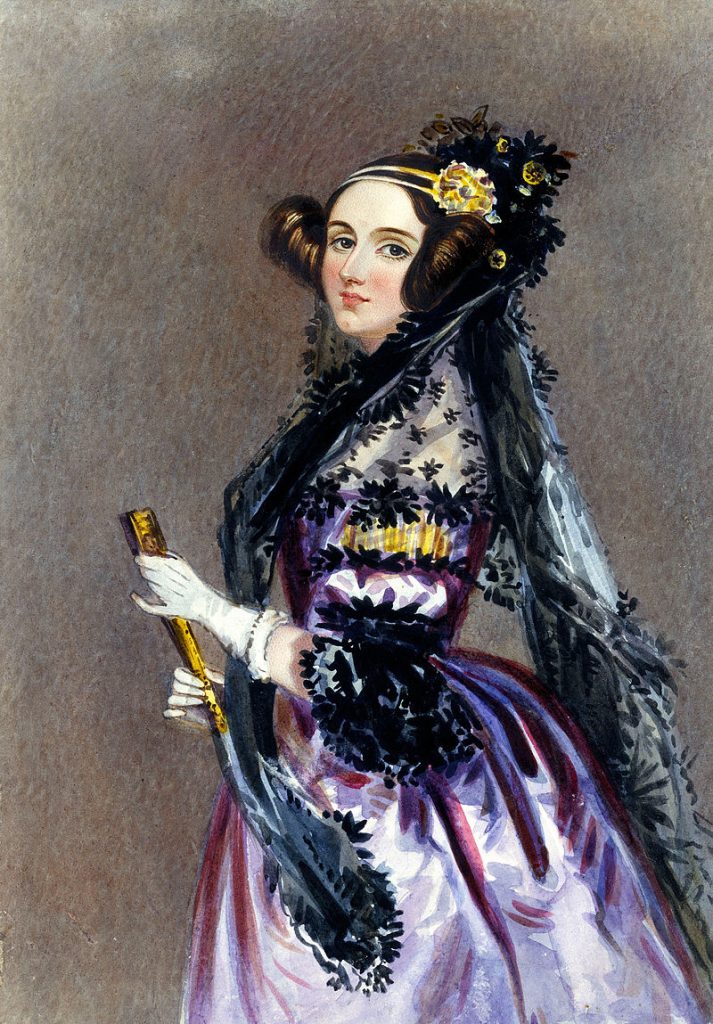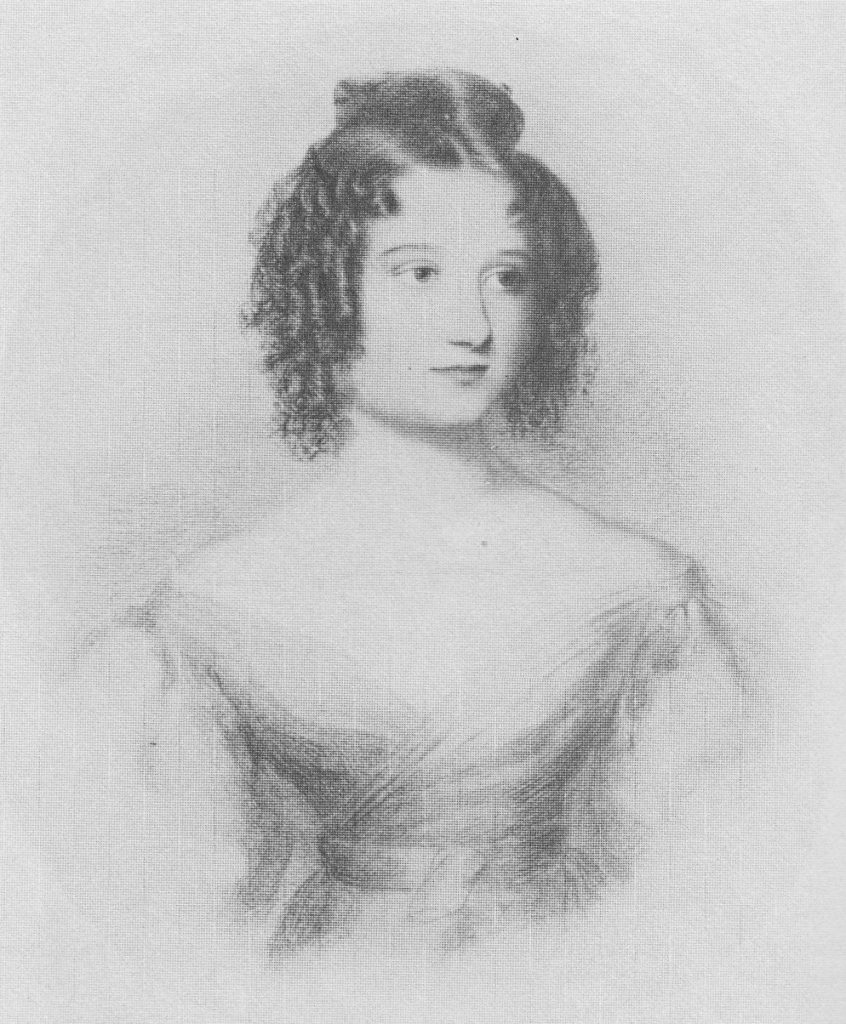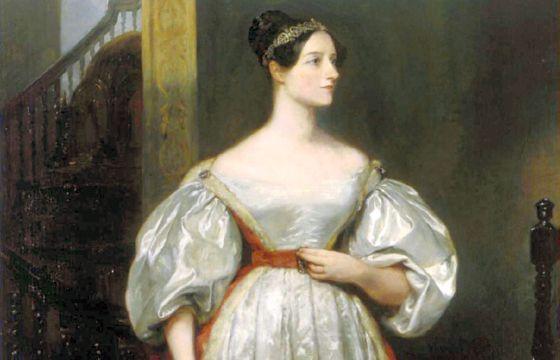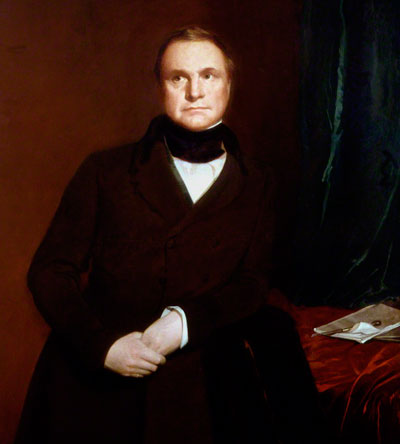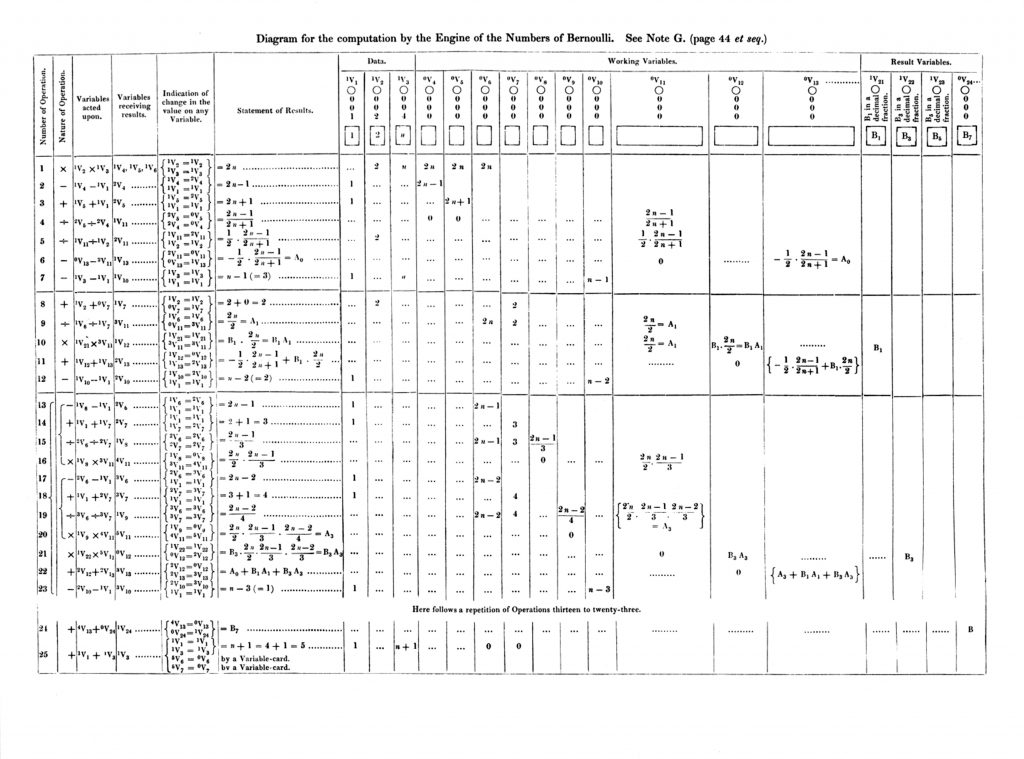Ada, Countess of Lovelace is said to be the first computer programmer because of her work with Charles Babbage on his Analytical Engine. She was a brilliant mathematician and writer, skilled in both mathematics and science. Her father was the poet Lord Byron, infamous for his many scandalous affairs.
Augusta Ada Byron was born to parents Lord George Gordon Byron and Lady Anne Isabella “Annabella” Milbanke Byron on December 10, 1815 in London, England. Ada, as she was called, was Lord Byron’s only legitimate child. Byron was very disappointed when his wife gave birth a girl and not a boy. She was named for his half-sister, Augusta Leigh.
Annabella left Byron on January 16, 1816 with the baby Ada for Kirkby Mallory, her parents’ home. Byron wanted nothing to do with his daughter, and let Annabella keep him despite English laws being that the father has full custody of the child. He left England a few days after he signed the Deed of Separation on April 21. Ada would never meet her father after that. When she was eight, he died in 1824. She would not even see a portrait of her father until she was twenty years old. This made her very popular in Victorian society. Often times, Ada was left in the care of her grandmother, Judith, Hon. Lady Milbanke. She loved Ada very much, unlike Annabella who was never very close with her young daughter, except for in public and towards society. As a teenager her mother’s friends watched over her closely.
Her mother made sure she was educated so she wouldn’t end up “insane” like her father, and Ada became skilled in both mathematics and science. Ada was tutored by people such as William Frend, William King, Mary Somerville, and Augustus De Morgan. At seventeen, it became more and more clear of her abilities in mathematics. In February 1828, Ada attempted at constricting her own pair of wings. She spent time studying the anatomy of birds to help her figure out wing proportions. Ada even wrote a book she called Flyology.
Growing up, Ada dealt with poor health. At eight years old she got headaches so terrible that worsened her vision. At thirteen, Ada came in contact and was left paralyzed in June of 1829. After spending nearly a year of bed rest, Ada was finally able to walk somewhat with crutches by 1831. In 1833 at age seventeen, Ada was caught having an affair with one of her tutors. The two tried to elope, but were, once again, caught. With help from her friends, Annabella tried hard to cover up what had happened so it wouldn’t be known by the public.
The same year she was caught of having an affair with one of her tutors, Ada was introduced by Mary Somerville, close friend and tutor, to Charles Babbage. She met many other scientists during her lifetime as well such as Sir David Brewster, Andrew Crosse, Charles Dickens, Michael Faraday, and Charles Wheatstone.
At seventeen years old, Ada was introduced in court. She became a popular member during her first season, especially because of her brilliance and was described as charming and dainty. In 1834, Ada was regularly at court and attending court events. Then, Ada married William, 8th Baron King on July 8, 1835, making her Lady King. The couple had two different estates and a home in London in which they resided in. One in Surrey called Ockham Park and another on Loch Torridon in Ross-shire. They spent their summers at their honeymoon spot, Worthy Manor in Ashley Combe. Ada was made Countess of Lovelace in 1838 due to being a descendant of the extinct Barons Lovelace. Her husband became both Earl of Lovelace and Viscount Ockham. They would go onto have three children, Byron (May 12, 1836-September 1, 1862), Anne Isabella “Annabella” (September 22, 1837-December 15, 1917), and Ralph Gordon (July 2, 1839-August 28, 1906).
When Ada’s mother had William Benjamin Carpenter assigned to teach Ada’s children in 1843, Carpenter fell in love with her quickly. Ada did not want to start an affair with him, and he stopped working for the family. Throughout the decade though, Ada was known to develop many relationships with other men and was rumored to be having affairs with many. From 1844 until her death, she was rumored at having an affair with John Crosse, son of Andrew Crosse. John ended up destroying their correspondence after her death, so not much is known about their relationship. He was given the heirlooms Byron had left with her. Ada also panicked when she was on her deathbed that Crosse was not allowed to see her. She also developed a love for gambling. In 1851, Ada attempted at a mathematical model for large bets, though it went terribly wrong, and left her in deep debt.
Phrenology and mesmerism were two things that interested Ada throughout her life. She had once made a comment to her friend Woronzow Greig about creating a mathematical model on how the brain and the nervous system worked in 1884. Ada never finished this though. That same year she visited Andrew Crosse to research carrying out electrical experiments. Shortly before falling ill in 1851, Ada had written to her mother about a project that related math and music, though that was all that was said about the project.
Ada and Charles Babbage had a close relationship, starting with their first meeting in June of 1833. He invited her to see the prototype of his Difference Engine that same month. Using her close relationship with Mary Somerville as a reason to visit, Ada continually visited with Babbage out of fascination of his works. Babbage was noted to be impressed by her interest of intellect and analytics, calling her “The Enchantress of Number”.
Italian mathematician Luigi Menabrea had written an articles on Babbage’s proposed Analytical Engine that Ada translated for nine months in 1842-43. People found Babbage’s new device confusing and hard to grasp, causing for lack of interest. Ada worked hard to explain every detail of how the machine worked, even calculating a sequence of bernoulli numbers for the engine and describing how the engine did not use artificial intelligence. Because of this, Ada is now considered to be one of the first computer programmers in the world. Her work in writing was supported by many scientists, The Analytical Engine was never built though.
Upon the publication of her writings on the device, Ada had a short-lived falling out with Babbage. He wanted to leave a statement on her papers that would criticize the way the government would treat his engine, but because it wouldn’t be signed, it would seem as if Ada wrote it. Their falling out didn’t last long, and they soon resumed corresponding with each other.
On November 27, 1852, Ada Lovelace died at thirty-six years old in Marylebone, London, England. For many months before her death, Ada had been suffering through uterine cancer. During the time of her illness, Ada had only been allowed to see those her mother Annabella allowed in the household. A few months prior to her death on August 30, Ada had said something to her husband that made him leave her bedside and stop all communication with her. It is still unknown what she had confessed to him. Ada was buried beside her father, Lord Byron, at the Church of St. Mary Magdalene located in Hucknall, Nottinghamshire.


